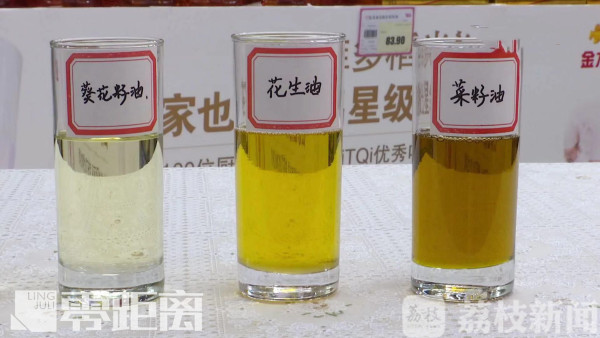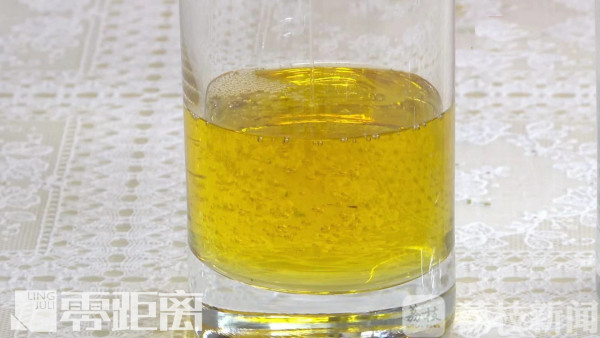There are many types of edible oils on the market, and the frequent hype of various concept oils by merchants makes most people feel at a loss when purchasing edible oils. How to choose edible oils? First of all, it is necessary to understand the nutritional characteristics of several edible oils.

1. Rice oil
The older generation often says "rice oil sai ginseng soup". Only brown rice that has just been shelled can boil out this thick layer of rice oil. Most of the nutrients of brown rice are concentrated in the rice skin and rice embryo. The rice we eat grinds off this part, and the ground part is rice bran. Rice bran contains 64% of the nutrients of rice. Rice oil is an oil made from rice bran, also known as rice bran oil. 150 kilograms of rice can extract 1 liter of rice oil, which is called "gold" in oil.

2. Rapeseed oil
Rapeseed oil is generally dark yellow or brown. In terms of nutritional value, the digestion and absorption rate of rapeseed oil by the human body can be as high as 99%, and it has cholagogic function. However, rapeseed oil lacks essential fatty acids such as linoleic acid, and the fatty acids in it are unbalanced, so the nutritional value is lower than that of ordinary vegetable oils.
3. Sesame oil
Sesame oil includes ordinary sesame oil and small grinding sesame oil, which are all oils made from sesame oil. The digestion and absorption rate of sesame oil is 98%. Regular consumption of sesame oil can regulate the penetration of capillaries, strengthen the oxygen absorption capacity of human tissues, improve blood circulation, promote gonad development, delay aging and maintain youth.

4. Sunflower oil
The refined sunflower oil is a bright and beautiful light yellow or cyan, with a fragrant smell and a pure taste. The human digestion rate of sunflower oil is 96.5%. It is rich in linoleic acid, which can significantly reduce cholesterol, prevent angiosclerosis and prevent coronary heart disease.
5. Peanut oil
Peanut oil is a kind of edible oil that is relatively easy to digest. Regular consumption of peanut oil can prevent skin wrinkling and aging, protect blood vessel walls, prevent thrombosis, and help prevent arteriosclerosis and coronary heart disease. Choline in peanut oil can also improve the memory of the human brain and delay the decline of brain function.

In addition to the conventional look at the logo, packaging and nutritional value of edible oil, you can also choose by color. So, is the lighter the color of the oil, the higher the purity, and the darker the color, the more impurities? In fact, the factors that affect the color mainly include two aspects. One is the different raw materials, and the other is the different processing technology. The color of the oil obtained from different raw materials is different. For example, the color of sesame oil will be darker than that of peanut oil, and the color of peanut oil will be darker than that of soybean oil. There is basically no big difference in the color of the same variety and grade of oil. If this barrel is obviously darker than that one, there may be a problem with the product.
All kinds of edible oil sources, such as peanuts, soybeans, rice and other crops, their own colors are different, so the color of refined vegetable oils will also change accordingly. For the question of whether the color depth is related to impurities, it cannot be compared among different oils.
For the same edible oil, the impurity content will be significantly different between large factory refining and small workshop pressing. The refined oil has less impurities and appears bright in color, while the oil produced by the original pressing will appear cloudy. Therefore, experts suggest that when choosing edible oils, the public can compare them between the same varieties. The lighter and brighter the color of the oil, it proves that you bought the right one.

But in the rich family of edible oils, there is a "maverick" oil, which is the darker the color, the better the quality. Rice oil is refined from rice, and the rich oryzine is a kind of strong antioxidant. This also makes rice oil more dark in color than its own plant color.

The viscosity, taste, fumes point, nutrition and other indicators of rice oil are all balanced to a good state. Its low melting point and low viscosity reduce the adsorption of oil by food, thus helping to reduce the absorption of oil by the human body, and it is also convenient to clean the kitchen. It is worth mentioning that the smoke point of rice oil is more than 200 degrees, and there is very little fumes generated when cooking, which is very suitable for frying and cooking.

Stir-fry with rice oil is fragrant, not greasy, and has a good taste. Add a spoonful of rice oil to it when cooking, and the rice will taste better.
For more exciting content, please pay attention to the "Zero Distance" column broadcast on Jiangsu City Channel at 18:20 tonight, Cable TV Nanjing Channel 27.
(Source: Jiangsu City Channel/Wang Huasu, Editor/Guozheng)